First of all, there’s a heap of monocolour glasses available. As far as I know they’re all mapped so that the left Audiostrobe channel controls the left frame and the right AS channel controls the right frame. This type of control is referred to by some manufacturers as Focus/Expand, where focus flashes both frames simultaneously, and expand flashes them alternately. I haven’t so much liked the expand mode on the Sirius or Proteus (with optional monocolour glasses), but having found myself growing to like it on the iLightz, I’ll have to revisit the Sirius and Proteus sessions that use it. Monocolour glasses come in all the standard LED colours – red, amber, green, blue and white. There’s not much to substantiate any relationship between colour and results, but the rule of thumb is that red is energising, amber likewise but more gentle, green is relaxed and blue is calm. Selection of colour can also be done using correspondences – red/Mars/martial/blood, green/Venus/love, etc. Red has the highest likelihood of inducing seizures in those predisposed to such things. Blue is important in the diurnal cycle of serotonin and melatonin, with the blue of daylight suppressing serotonin-to-melatonin conversion, inhibiting sleep. Of potential interest is the fact that the human visual system treats blue and red-green differently, with red-green being processed at a higher priority – maybe useful for delivering two discrete stimulus frequencies.
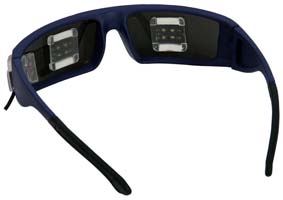
MindPlace GanzFrame Monocolour or Bicolour Glasses
Red, amber, green and blue LEDs are strictly monochromatic. LEDs are one place where you get to play with really truly live quantum physics. The light we see from a LED is a stream of photons in a very tight range of energy levels, measurable as their wavelength. A photon is emitted whenever an electron in the excited semiconductors hops the forbidden bands to change energy levels. LEDs use a variety of exotic semiconductor materials and chemical dopants to cause the jumps to occur at the energy levels corresponding to the wavelength of the desired colour. So, looking at the spectrum of visible light, the output of a LED will be represented as a steep energy spike at the wavelength of the particular colour.
White LEDs are another matter entirely. They come in two flavours, ones which use an extreme blue or ultraviolet LED to excite a phosphor blend, in same way as fluorescent tubes use an electrical plasma to excite a phosphor coating; and ones that use separate red, green and blue LEDs (often on the same die, in the same package) to create RGB blended white light. The spectrum of the fluorescent LED depends on the phosphor blend. Tricolour is usual, with three phosphors emitting red, blue and green respectively. True white LEDs can use five phosphors, expanding the gamut to more accurately match full spectrum daylight. Whichever method is used, white LEDs do not provide a continuous spectrum like incandescent light or daylight – their spectrum as seen with a prism will show bright lines at intervals rather than the rainbow of daylight.
A while back there were glasses that used incandescant lamps. When you heat a piece of wire to white heat, the atoms of the metal are violently and randomly excited and they emit photons with a wide range of energies and corresponding wavelengths. There was a fascinating debate between David Siever of MindAlive and Robert Austin of MindPlace on the relative merits of red LEDs and white incandescants (in an issue of the Megabrain Report, I think). Whatever those merits may or may not be, incandescant lamps of a suitable size and with fast response filaments are hard to come by and expensive, so economics has rendered the incandescant light goggle extinct. Response time is important – the heating and cooling of the wire between flashes takes time, and beyond a certain frequency (20Hz tops with a good lamp) it just becomes a continuous glow. On the other hand, this thermal inertia gives a very gentle flash, with a minimum of harmonics which may or may not be detrimental and the continuous spectrum provides more even stimulation in the broad overlapping red, green and blue sensitivity ranges of the three types of colour-sensitive retinal cone.
A LED is, for all intents and purposes, an instant on/off device. The brightness is proportional to the current through the device over a very narrow band. Superbright LEDs in particular have a very limited current range between fully off and fully on. As a consequence most (all?) mind machines use some form of Pulse Width Modulation (PWM) to control the LED brightness. With PWM the full control voltage is switched on or off, with the ratio of on-time to off-time (duty cycle) strictly controlled to create the illusion of dimming. PWM frequencies are usually a great deal higher (1-30kHz common) than the frequencies of interest to AVS users, so the illusion is quite solid.
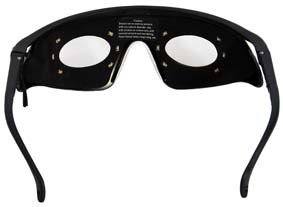
Transparent 12-LED Glasses (Shown Open)
Transparent Corp offers a couple of interesting monocolour left/right mapped glasses in their 12-LED white and 12-LED blue. The interesting thing about these is that the LEDs are positioned peripherally instead of right in front of the iris as with most glasses. The result is a very peaceful diffused light, still bright enough to elicit fine visuals. A further consequence of the LED placement is that they have been able to provide removable/reattachable ‘patches’ that allow the glasses to be used eyes-open – very effective for study and art. Photosonix offer a similar open-eye design in their pvStim glasses. MindGear also have open eye variants, but all using the nasty frame I’ve commented on in the iLightz review.

L&S Synergizer Bicolour Glasses
The next group of glasses is the bicolour. Everything said of monocolour applies, except that these use the two channels to map to the two colours, usually red/green or red/blue. With these glasses, ‘focus’ flashes red and green simultaneously and ‘expand’ flashes them alternately, both frames always in phase. Using Audiostrobe or the various machine’s own programmability, the two colours can be individually controlled. The glasses supplied with the L&S Synergizer distinguish themselves by having a couple of switches, allowing them to be configured as red, green or both, and mapped two-colour or left/right.
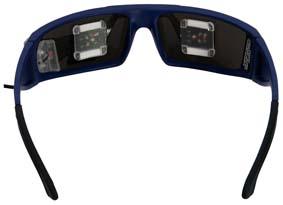
MindPlace GanzFrame Tricolour Glasses (Procyon only)
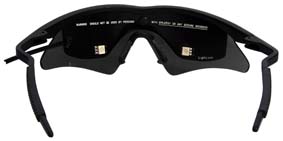
iLightz Color Matrix Tricolour Glasses (iLightz only)
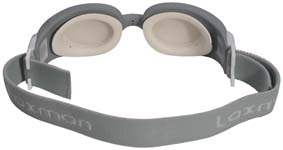
Laxman Full-Colour Open-Eye Goggles (Laxman only)

MindAlive TruView Omniscreen Bihemispheric Glasses
Specialised glasses include the Omniview from MindAlive and the Hemistim from Photosonix. These are both monocolour glasses designed to provide left/right visual field stimulation for asymmetrical sessions, where each brain hemisphere is presented with stimulus at different frequencies – common with depression and ADD/ADHD sessions.
There’s also an assortment of multicolour arrangements, none of which I’ve tried, but they look kind of interesting on paper. Photosonix have the most expensive glasses on the market with their ColorTracks. These glasses include a decent amount of intelligence to allow them to track the session frequency with changes of colour and perform all manner of clever tricks. MindGear have the RGB Tencolor lightframes that have a set of DIP switches to select any one of ten possible colours.
In case I’ve failed to make it entirely clear, the MindPlace GanzFrames, monocolour, bicolour or tricolour are my absolute favourites – brightest, most comfortable and most even illumination. Had I purchased the standard iLightz instead of the Pro version with the Color Matrix glasses I may have been a lot more enthusiastic. The L&S Synergizer glasses are okay, and have their special switch trick, but they leave a bit to be desired in the brightness department. The Transparent 12-LED, MindPlace Mono- and Bi-colour and the L&S Synergizer glasses are all common power (CP) using a 3.5mm stereo plug and are completely cross-compatible (many other glasses also use this configuration, and some makes offer CG (common ground) options for the few CG machines around. The bihemispheric glasses are specialised – required if you’re wanting to follow a particular therapeutic protocol that calls for asymetrical stimulation, you’ll be needing glasses of this type and won’t be critical of them in other applications. Peripheral stimulation/open-eye glasses are worth trying for studying and reading, also for art appreciation, however I suspect they’re more gimmick than substance. The Laxman goggles are out all on their own – if you want open-eye colour, they are without peer.
It’s worth keeping in mind that open-eye designs miss out on one advantage of closed-eye for relaxation – simply closing the eyes elicits a strong alpha response in most people. Reciprocally, open-eye designs may have some benefit for frequencies away from the natural 10Hz closed-eye response frequency, as they will not be competing with the spontaneous alpha. One obvious advantage of open-eye is that it’s easier to stay awake.
So there you go. More than you ever wanted to know about glasses and LEDs and stuff. I’m amazed at just how many little details that may or may not matter there are, and I’m sure I’ve overlooked plenty!
Cheers,
Craig
Comments
Hi,
Just found your website tonight. Quite refreshing to see your more ‘neutral’ way of looking at things than a lot of other authors I have come across.
I have had NP2 for quite awhile now, and am getting to the point where I want to utilize the visual part of AVS (did play with the screen flashing piece of NP2).
I am particularly interested in the open-eye models, as I would like to be able to practice my music while utilizing programs that help with learning/creativity.
You make mention of the fact that you feel these glasses may be ‘more gimmick than substance’. Of course I realize that results vary from person to person, and depending on the programming used — however, I am hoping that these would do better for me than simply using a session to get to the right brainwave region and then stopping to practice.
I have looked at products like the MindSpa which appears to be more of a cadillac solution.
Alternatively, it looks as though I can just purchase something like the light and sound synergiser and a set of the multi-purpose glasses.
Are there other devices I can use with my own NP2 sessions, along with what is included in their respective packages?
TIA
Hi Scott,
Thank you. “Neutral” – yes, I’m perfectly happy as long as a thing does exactly what I expect it to.
If you’re wanting to use open-eye while engaged in creative activities, then the white or blue 12-LED glasses from Transparent work well with focus, concentration and creativity type sessions. They work fine with the Synergizer, but for the money you might want to look at a Sirius or Proteus.
What sort of “other devices” do you have in mind?
Cheers,
Craig
Thanks for the reply, sorry I didn’t respond sooner.
I am thinking that I will probably start small, with the Sirius, and get a set of the open eye glasses and give that a go. I can use the included glasses for my standard sessions, and I’ll get the open eye glasses and give that a go in relation to my music (to enhance my learning and creativity).
When I had originally mentioned ‘other devices’ I was just referring to items like the Sirius and Proteus. Given that I can use NP2 and audiostrobe with the Sirius, I expect that is the best way to start.
Scott
Good choice. You won’t be disappointed and you can always upgrade as your interest and need evolves.
Cheers.
Craig